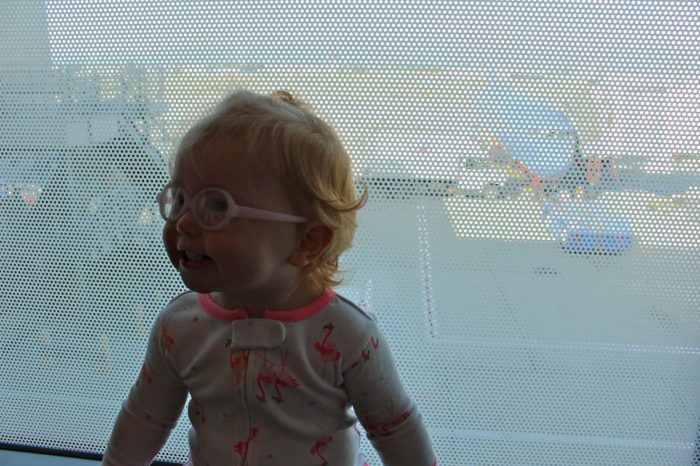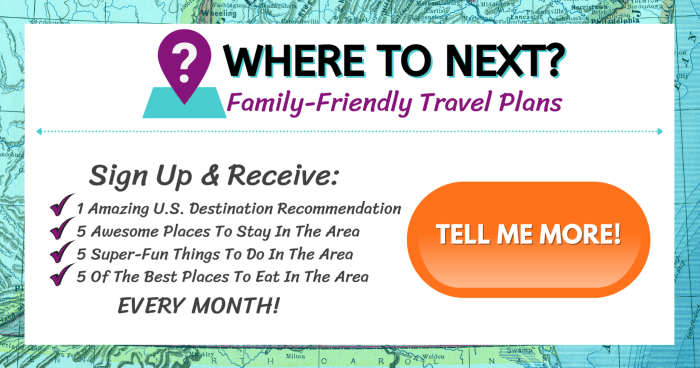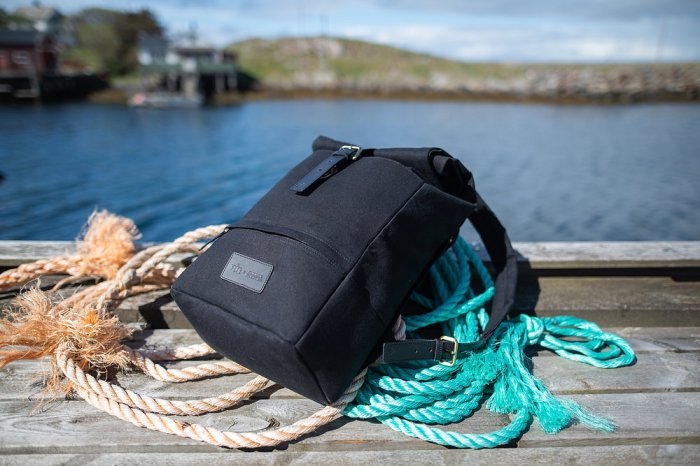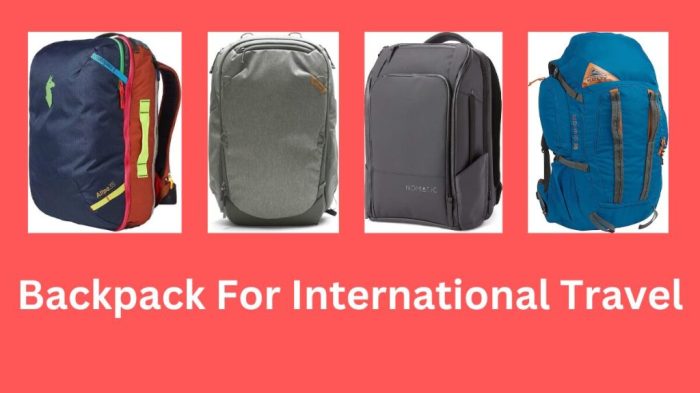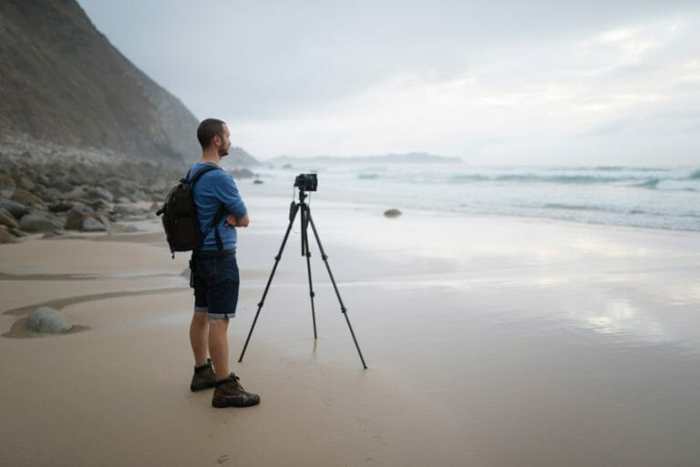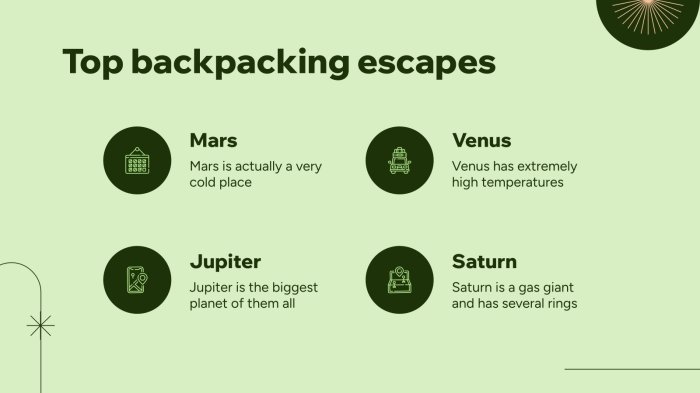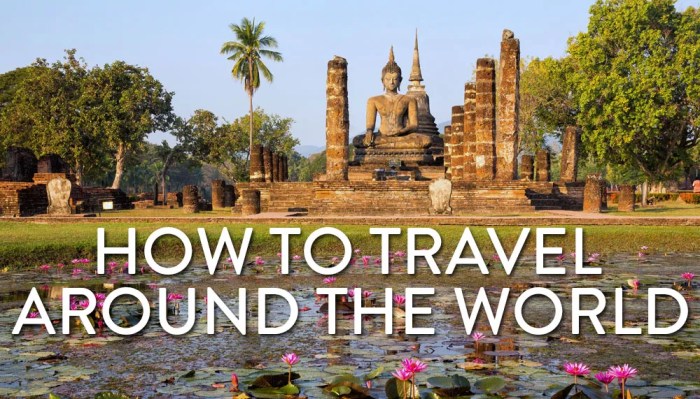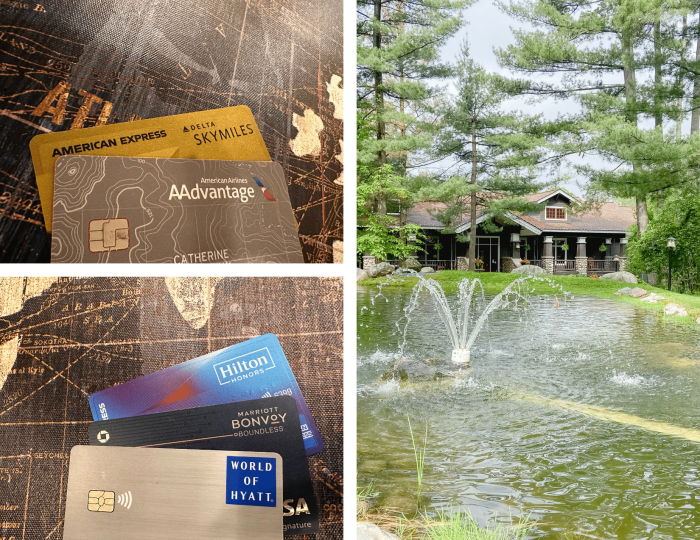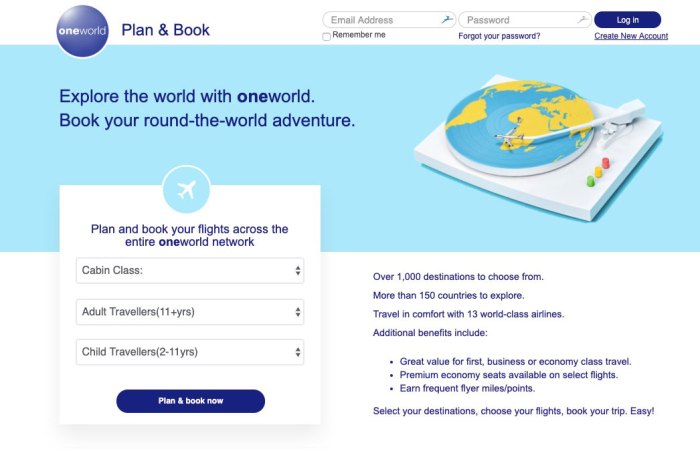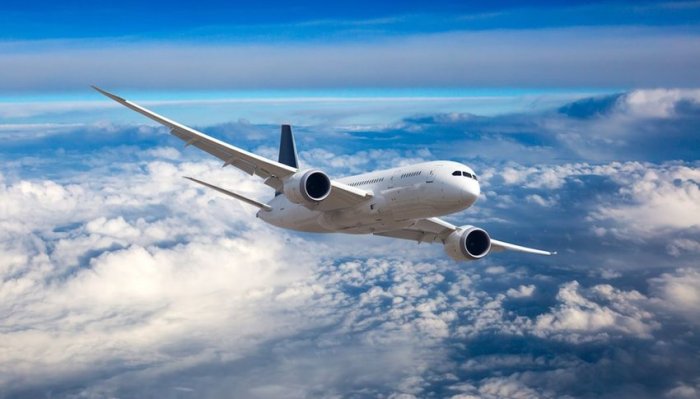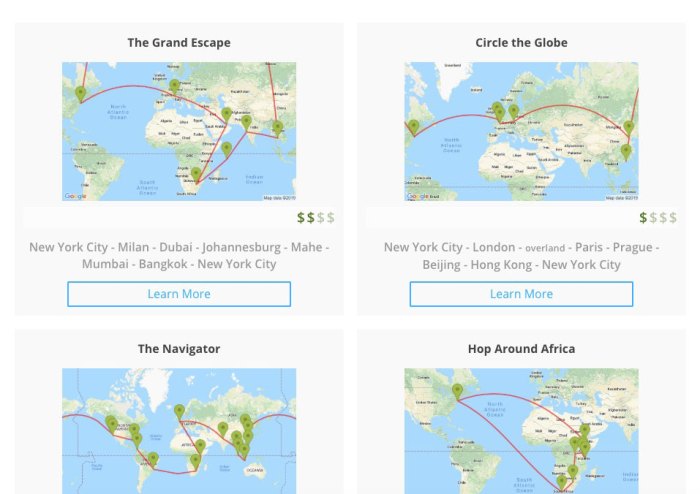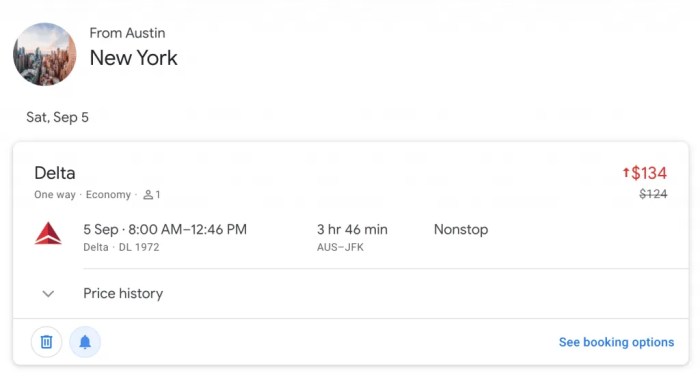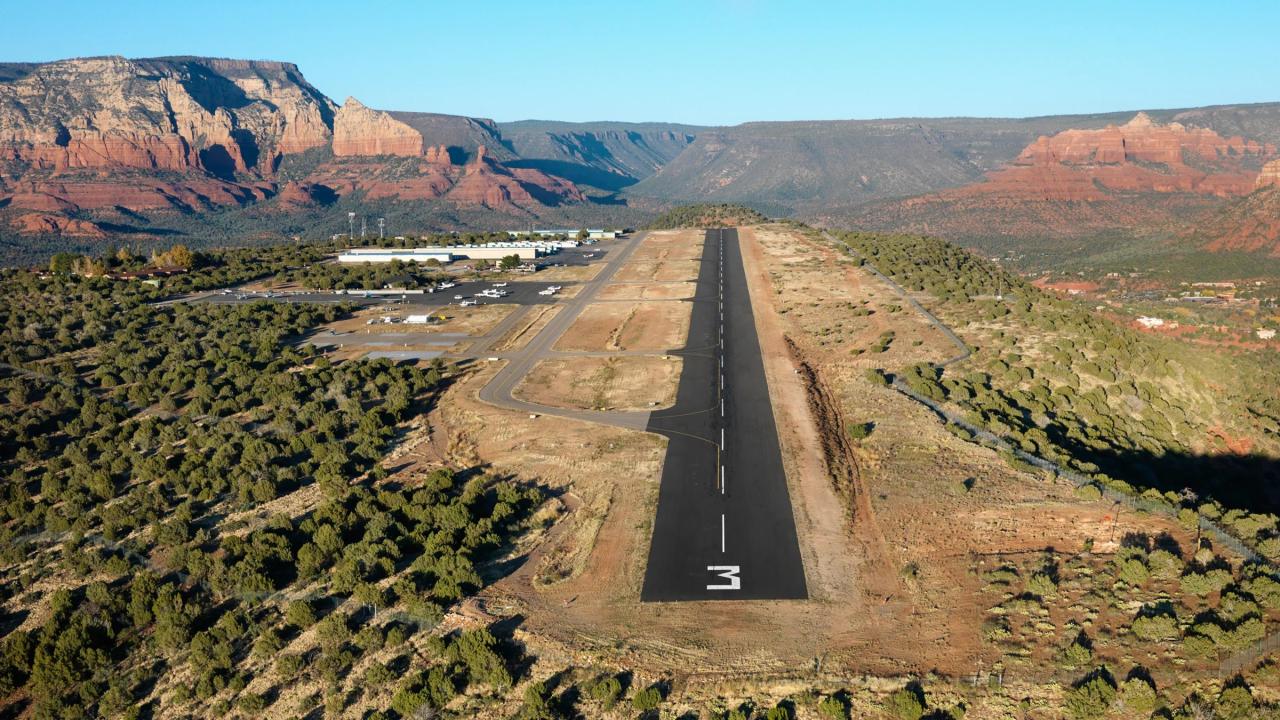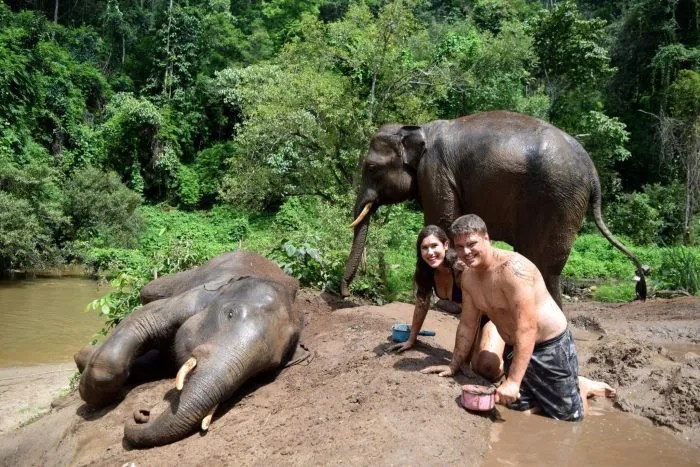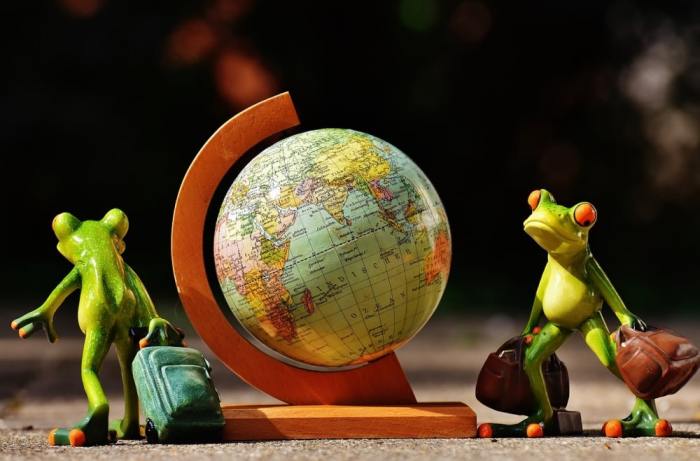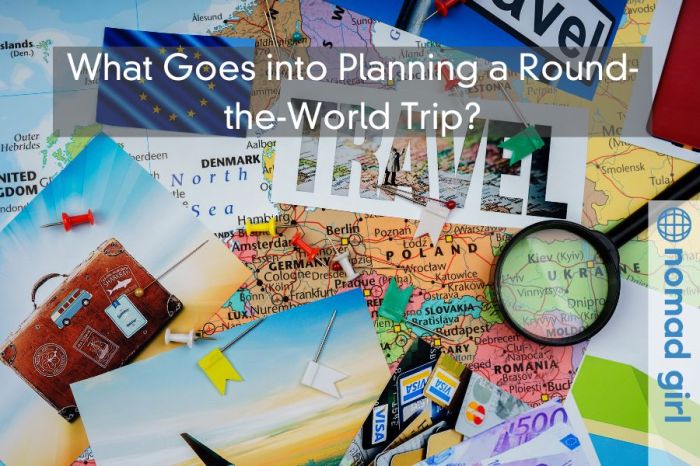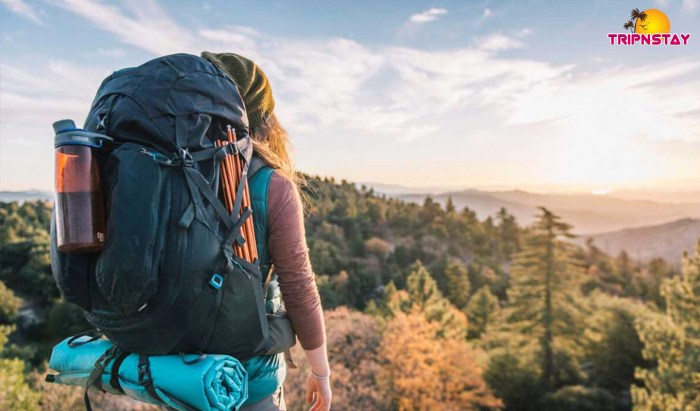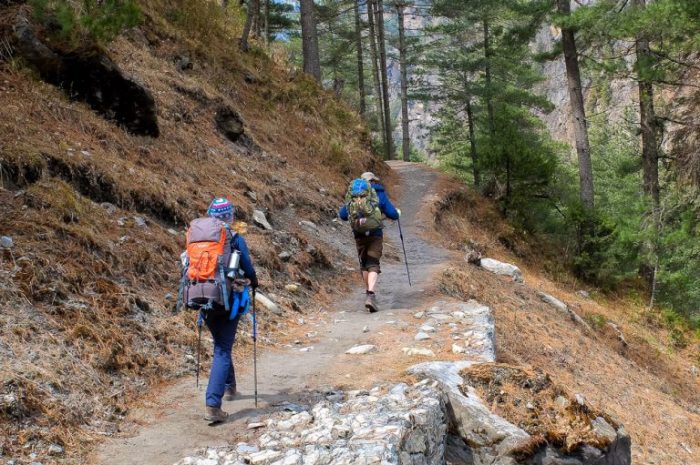Backpacking around the world alone offers a transformative journey, filled with breathtaking experiences and personal growth. This comprehensive guide provides the essential knowledge and strategies to plan, prepare, and navigate your solo adventure. From crafting a meticulous itinerary to understanding cultural nuances, and mastering essential safety protocols, we’ll equip you with the tools to make the most of your trip.
Discover how to budget effectively, choose the perfect destinations, and secure your safety while exploring the world on your own terms. This guide dives into the practical aspects of solo backpacking, covering everything from accommodation and transportation to activities and cultural sensitivity.
Planning & Preparation

Source: staticflickr.com
Embarking on a solo backpacking adventure around the world demands meticulous planning and preparation. This meticulous approach ensures a smoother, more enjoyable, and safer experience. Thorough research, realistic budgeting, and meticulous packing are crucial for a successful journey.Careful planning is essential to navigate the logistical complexities and cultural nuances of international travel. Anticipating potential challenges and developing contingency plans are integral to a safe and enriching solo expedition.
This proactive approach ensures a more fulfilling and memorable adventure.
Embarking on a solo backpacking adventure around the world offers unparalleled freedom and self-discovery. However, the thrill of exploring vast landscapes doesn’t have to be confined to far-flung destinations. Exploring great hiking places near me, like those listed in this helpful guide, great hiking places near me , can offer a similar sense of accomplishment and connection with nature, while remaining accessible and convenient.
This can serve as a fantastic precursor to larger backpacking adventures.
Essential Documents and Permits
A comprehensive list of necessary documents is paramount for a smooth international journey. This includes a valid passport, visas for each country visited, and proof of travel insurance. Ensuring all documentation is up-to-date and in order will avoid unnecessary delays and complications.
- Passport: A valid passport is a fundamental requirement for international travel, ensuring identification and facilitating entry into various countries. Its validity should extend beyond the planned travel period.
- Visas: Visa requirements vary greatly depending on the country and the traveler’s nationality. Thorough research and application for required visas are crucial to avoid entry complications.
- Travel Insurance: Comprehensive travel insurance is essential for unforeseen circumstances such as medical emergencies, lost luggage, or trip cancellations. Consider reputable providers and policy options.
Budgeting for the Trip
Budgeting for a backpacking trip necessitates a detailed breakdown of expected expenses. A realistic budget, accounting for transportation, accommodation, food, activities, and unforeseen costs, is vital for managing finances effectively throughout the journey. Using a spreadsheet for tracking expenses can greatly aid in maintaining control of funds.
| Category | Estimated Cost (per month) | Example |
|---|---|---|
| Transportation | $500-$1000 | Flights, bus travel, train tickets |
| Accommodation | $200-$500 | Hostels, guesthouses, budget hotels |
| Food | $200-$400 | Local markets, street food, budget restaurants |
| Activities | $100-$300 | Tours, entrance fees, local experiences |
| Contingency | $100-$200 | Unforeseen circumstances, emergencies, additional expenses |
Destination Research and Selection
Selecting destinations for a solo backpacking trip necessitates careful research and consideration of personal interests and preferences. Analyzing travel times, visa requirements, safety concerns, and cultural nuances is crucial. Online forums, travel blogs, and social media can offer invaluable insights from other travelers.
- Interests and Preferences: Consider your interests, such as history, nature, food, or nightlife, when choosing destinations. Tailoring your destinations to align with these interests will enhance your experience.
- Safety Considerations: Research the safety of each destination and be aware of any potential risks. Read travel advisories from your government and be mindful of local customs and laws.
- Cultural Sensitivity: Research the local culture and customs to ensure respectful behavior during your travels. Learning a few basic phrases in the local language can be very beneficial.
Sample Itinerary: 3-Month Southeast Asia Backpacking Trip
This sample itinerary provides a framework for a 3-month backpacking trip through Southeast Asia, offering a glimpse into the region’s diverse landscapes and cultures. This itinerary is a starting point and can be adapted to suit individual interests and preferences.
- Month 1: Thailand
-Bangkok, Chiang Mai, and beaches. - Month 2: Vietnam
-Hanoi, Ho Chi Minh City, and Ha Long Bay. - Month 3: Cambodia
-Siem Reap, Phnom Penh, and beaches.
Essential Packing List
Packing light is crucial for solo backpacking trips. A well-organized packing list, categorized by item type, is essential for minimizing weight and maximizing space.
- Clothing: Pack versatile clothing items that can be mixed and matched. Consider weather conditions in the destinations.
- Electronics: A portable charger, a smartphone, a camera, and a travel-sized first-aid kit are highly recommended.
- Toiletries: Pack travel-sized toiletries to save space and weight.
- Documents and Money: Keep your passport, visa, and money safe and secure. Consider a money belt or a secure travel pouch.
Safety & Security
Global travel, particularly solo backpacking, presents unique safety challenges. Understanding potential risks and proactively implementing safety measures is paramount for a positive and secure experience. Careful planning, awareness, and preparedness are key to mitigating risks and ensuring a safe journey.Staying vigilant in unfamiliar environments is crucial for solo backpackers. This involves adapting to local customs, being mindful of surroundings, and recognizing potential danger signals.
Embarking on a solo backpacking adventure across the globe is a transformative experience. Finding solace in nature is key, and exploring local hiking trails, like those near you, nature hiking trails near me , can provide a similar sense of connection and tranquility. Ultimately, both global journeys and local explorations offer unique opportunities for personal growth and self-discovery when backpacking alone.
Trusting your instincts and avoiding risky situations is essential. Developing strategies for interacting with locals and potential companions is also important. Building trust and maintaining respectful communication can lead to valuable insights and friendships, while fostering a sense of belonging.
Personal Safety Precautions
Prioritizing personal safety is paramount. This includes meticulous planning, maintaining awareness of your surroundings, and taking precautions against petty theft. Avoiding secluded areas at night, especially in unfamiliar cities, and traveling with a trusted companion (if possible) significantly enhances your safety. Utilizing reliable transportation and staying informed about local laws and regulations further contributes to your security.
It’s essential to avoid displaying expensive jewelry or electronics to deter unwanted attention.
Strategies for Staying Safe in Unfamiliar Environments
Learning basic local phrases and customs, understanding local laws, and being observant of your surroundings are crucial. Researching the area beforehand, including potential safety concerns and local emergency services, is highly recommended. Using reliable navigation tools and carrying a local map or guide, especially in remote areas, is vital for safety and orientation. Utilizing reputable transportation methods and being aware of local scams is essential.
Meeting New People Safely
Meeting new people can be a rewarding part of the backpacking experience. It’s important to be cautious and not reveal too much personal information to strangers. Maintaining situational awareness and choosing safe meeting places is key. Be discerning in your interactions and prioritize safety over impulsiveness.
Embarking on a solo backpacking adventure across the globe offers unparalleled freedom and self-discovery. Exploring diverse cultures and landscapes is a significant aspect of the travel experience. Travel often requires careful planning, from budgeting and visa requirements to choosing the right gear and routes, but the rewards are immense for those who commit to the challenge.
Ultimately, the journey of backpacking alone is about embracing the unknown and finding personal growth.
Essential Safety Precautions While Traveling Alone
Carrying a personal safety alarm or whistle can be a valuable deterrent. Keeping a detailed itinerary and sharing it with a trusted contact, along with regular location updates, is highly recommended. Learning basic first aid and carrying a well-stocked first-aid kit are crucial. It’s also prudent to familiarize yourself with emergency contacts and local emergency services numbers.
Informing Someone of Your Travel Plans
Communicating your travel plans to a trusted contact is crucial. This includes sharing your itinerary, including accommodation details, and expected return date. Regular updates about your location and well-being can provide peace of mind to those who care about you.
Methods for Securing Personal Belongings
Utilizing secure storage options, such as hotel safes or locked compartments, is important. Consider a money belt or a secure bag for valuables. When staying in hostels, utilizing lockers and other security features provided by the facility is recommended.
Emergency Resources and Assistance
Having emergency contacts readily available is vital. This includes family members, friends, and local authorities. Knowing the local emergency services numbers and embassy contact information is recommended. Having travel insurance is crucial to cover unexpected situations. Downloading useful apps, such as translation apps or emergency services apps, can be extremely helpful.
Cultural Sensitivity & Etiquette
Global travel, particularly solo backpacking, demands a profound understanding of cultural nuances. Navigating unfamiliar customs and traditions respectfully is crucial for a positive experience and fostering meaningful connections with local communities. Misunderstandings, even seemingly minor ones, can lead to friction and potentially harmful consequences. A thoughtful approach to cultural sensitivity is paramount to a successful and enriching journey.Respectful interaction hinges on the ability to adapt to different cultural norms.
This involves more than just avoiding offensive behaviors; it’s about actively seeking to understand and appreciate the perspectives and values of the people you encounter. This adaptability allows for deeper engagement and fosters mutual respect.
Adapting to Different Cultural Norms and Customs
Understanding and adapting to diverse cultural norms is essential for seamless travel. This involves acknowledging that personal space, communication styles, and social etiquette vary significantly across the globe. Being aware of these differences and demonstrating a willingness to learn and adjust is key to navigating cultural landscapes successfully.
Examples of Appropriate and Inappropriate Behaviors
Cultural norms dictate appropriate behavior in various situations. For instance, in some cultures, direct eye contact is considered a sign of respect, while in others, it can be viewed as aggressive or disrespectful. Similarly, the use of formal titles and greetings can differ substantially between cultures. Inappropriate behavior can include the use of offensive language, disrespecting local traditions, or displaying a lack of interest in the local culture.
Learning Basic Phrases in the Local Language
Learning even a few basic phrases in the local language significantly enhances your interactions with locals. Simple greetings, thank-you expressions, and apologies demonstrate respect and can open doors to deeper conversations. Learning basic phrases such as “hello,” “thank you,” “please,” and “excuse me” can greatly improve your travel experience and interactions. These gestures show an appreciation for the local culture and language.
Respectful Interaction with Local Communities
Respectful interaction with local communities fosters positive travel experiences. Engage with locals in a genuine and respectful manner. Observe local customs and etiquette, and refrain from behaviors that could be considered offensive or disruptive. Actively listening to and engaging with locals demonstrates a genuine interest in their culture and helps to build bridges of understanding.
Understanding Local Laws and Regulations
Understanding local laws and regulations is crucial for safe and legal travel. Different countries have varying laws concerning photography, public displays of affection, and even personal attire. Researching these regulations before your trip can help you avoid any misunderstandings or legal issues. Familiarizing yourself with local laws and regulations ensures a smooth and lawful journey.
Solo Travel Experiences
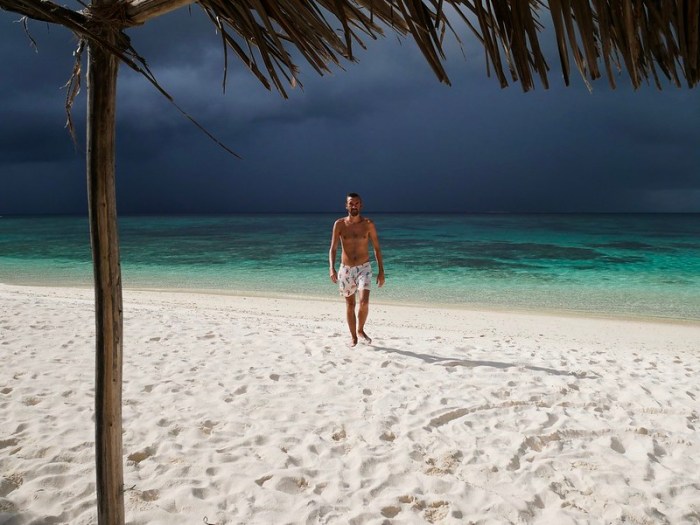
Source: staticflickr.com
Embarking on a backpacking journey alone presents a unique tapestry of experiences, offering both unparalleled freedom and unforeseen challenges. The world unfolds at your own pace, allowing for profound self-discovery and a deeper understanding of diverse cultures. This exploration, however, is not without its complexities, requiring a thoughtful approach to safety, planning, and personal resilience.Solo travel offers a powerful catalyst for personal growth, pushing individuals beyond their comfort zones and fostering independence.
It’s a journey of self-reliance, where every decision, every interaction, and every moment contributes to a richer understanding of oneself and the world. Navigating unfamiliar landscapes and cultures fosters adaptability, resilience, and a deeper appreciation for different ways of life.
Unique Experiences and Challenges of Solo Backpacking
Solo backpacking presents a unique set of experiences that are often absent when traveling in groups. The freedom to choose one’s own itinerary, explore hidden gems, and interact with locals on a more personal level are significant advantages. However, this freedom comes with its own set of challenges. Loneliness, especially during periods of isolation, can be a significant concern for some travelers.
Similarly, navigating unfamiliar situations without a support system requires a degree of independence and problem-solving skills. The increased responsibility for safety and security is another key consideration.
Common Misconceptions about Solo Travel, Backpacking around the world alone
A common misconception is that solo travel is inherently risky. While caution is always necessary, many travelers find their solo journeys remarkably safe and rewarding. Another misconception centers around the idea that solo travelers are necessarily introverted or antisocial. In reality, solo travel can be a fantastic opportunity to meet new people, foster genuine connections, and discover hidden social strengths.
It’s also often wrongly perceived as expensive, but with careful planning and resourcefulness, solo travel can be budget-friendly.
Embarking on a solo backpacking adventure across the globe offers unparalleled freedom and self-discovery. However, honing your outdoor skills and exploring nature’s beauty starts closer to home. For instance, exploring the trails near you can provide a great starting point for future global expeditions, with many excellent options like places to go hiking near me. These experiences will help build the confidence and resilience needed for the ultimate backpacking journey around the world.
Opportunities for Personal Growth and Self-Discovery
Solo travel provides unparalleled opportunities for personal growth and self-discovery. The act of navigating unfamiliar situations, making independent decisions, and confronting challenges head-on fosters resilience and self-reliance. The immersion in different cultures and perspectives broadens horizons and promotes empathy and understanding. The experiences cultivate a deeper appreciation for personal strength and the ability to adapt to new environments.
Advantages and Disadvantages of Solo Backpacking Compared to Group Travel
| Feature | Solo Backpacking | Group Backpacking |
|---|---|---|
| Flexibility | High – Tailor the trip to your interests and schedule | Lower – Trip plans are often dictated by the group |
| Cost | Potentially lower, depending on choices | Potentially higher due to shared costs |
| Social Interaction | Opportunity for deeper connections with locals, but potential for loneliness | Easier interaction with fellow travelers, but potential for less individual exploration |
| Safety | Requires greater self-reliance and vigilance | Potential for shared support and safety in numbers |
| Personal Growth | Significant opportunities for self-reliance and independence | Personal growth opportunities, but may be less pronounced |
The choice between solo and group travel depends on individual preferences and priorities. Solo travel allows for greater autonomy and self-discovery, while group travel offers a shared experience and built-in support network.
Inspirational Stories of Solo Travelers
Numerous inspiring stories highlight the positive experiences of solo travelers. A traveler might recount their journey through Southeast Asia, forming friendships with local artisans and discovering hidden temples, or a story of overcoming language barriers to connect with people from vastly different backgrounds. These stories often emphasize the transformative power of solo travel in fostering personal growth and cultural understanding.
There are many stories that demonstrate the rewards of embracing the unknown and trusting in one’s own abilities.
Embracing Spontaneity and Flexibility
Embracing spontaneity and flexibility is crucial for a successful solo backpacking trip. Rigid itineraries can hinder the discovery of unexpected adventures and opportunities. Allowing for serendipitous encounters and unexpected detours can lead to profound insights and memories that would otherwise be missed. This flexibility is a key element in fostering personal growth and a deeper appreciation for the journey itself.
Accommodation & Food
Global travel, especially solo backpacking, hinges on strategic choices for lodging and sustenance. Finding affordable, safe, and culturally appropriate options is paramount. This section delves into the spectrum of accommodation options, from budget-friendly hostels to budget hotels, and explores diverse culinary experiences.
Accommodation Comparison
Different accommodation types cater to various needs and budgets. Choosing the right option is crucial for a smooth and enjoyable backpacking experience.
| Accommodation Type | Description | Pros | Cons |
|---|---|---|---|
| Hostels | Hostels are budget-friendly lodgings, typically featuring shared rooms and communal spaces. | Exceptional value for money, opportunities for meeting fellow travelers, social atmosphere. | Potentially noisy, shared bathroom facilities, limited privacy. |
| Guesthouses | Guesthouses offer a more private and homey atmosphere compared to hostels, often with private rooms and attached bathrooms. | Increased privacy and comfort, often include breakfast, personalized service. | Can be more expensive than hostels, may not be as social as hostels. |
| Budget Hotels | Budget hotels provide a balance between privacy and affordability. | More privacy than hostels or guesthouses, generally have better facilities (e.g., private bathrooms, sometimes included breakfast). | Can be more expensive than hostels or guesthouses, sometimes lack the social aspect of hostels. |
Budget-Friendly Food Options
Numerous affordable and delicious food options exist in various destinations. A key is understanding local markets and eateries.
- Street food vendors are a common and economical way to sample local cuisine. Their offerings often provide a taste of the local culture, while being significantly more affordable than sit-down restaurants.
- Local markets are excellent places to buy fresh produce and ingredients for cooking your own meals, or to find affordable, pre-made meals. These markets are a treasure trove of local flavors and insights into regional cuisines.
- Supermarkets provide a wide selection of affordable staples. These are often better in terms of freshness and variety than street food, but require some preparation.
Cooking Your Own Meals
Cooking your own meals is a valuable option for solo backpackers, offering control over food quality and cost.
- Benefits of cooking include cost savings and the ability to customize meals to personal dietary needs. This gives travelers greater flexibility and control over what they eat, avoiding potentially unhealthy or overpriced options.
- Drawbacks include the need for kitchen facilities, potentially leading to inconvenience or additional costs. The time commitment to shopping, cooking, and cleaning can also be a factor. Travelers must weigh the pros and cons carefully before deciding to cook their meals.
Finding Safe and Affordable Food
Safety and affordability are crucial considerations when choosing food.
- Look for restaurants with many local patrons. This is a strong indicator of authenticity and safety. Local eateries, particularly those popular with locals, are generally reliable sources for affordable and safe food.
- Avoid overly flashy or overly-advertised restaurants, as these can sometimes have inflated prices or questionable hygiene practices. Prioritize establishments with a more local and modest ambiance, and check for cleanliness and safety.
- Trust your instincts. If a place seems unusual or unsafe, it is better to move on. Intuition plays a critical role in selecting safe and affordable food options.
Food Preparation Tips
Planning and preparation are essential for maintaining a healthy diet and avoiding food-related issues while backpacking.
- Packing light is crucial. Minimize the weight of your food supplies, and consider the practicality of transporting certain items.
- Choose non-perishable items like dried fruits, nuts, and granola bars for snacks and emergencies.
- Keep food in airtight containers to prevent spoilage. Proper food storage is essential to maintain food quality and avoid issues with insects or rodents.
Transportation

Source: staticflickr.com
Global travel, especially backpacking, hinges on efficient and cost-effective transportation choices. Selecting the right mode depends on individual priorities like budget, time constraints, and desired experience. Careful planning and research can transform a journey from stressful to seamless.
Diverse Transportation Options
Various modes cater to different needs and preferences. Buses, trains, flights, and ferries each offer distinct advantages and drawbacks. Understanding these nuances is crucial for making informed decisions.
Cost-Effectiveness and Convenience
Bus travel often represents the most budget-friendly option, particularly for long-distance journeys. However, it frequently sacrifices speed and convenience. Trains provide a more comfortable experience, but fares can be higher than buses. Flights are the fastest option but can be expensive, especially during peak seasons. Ferries are ideal for island hopping or coastal routes, but availability and schedules might be limited.
Ultimately, the most cost-effective and convenient mode hinges on the specific route and traveler’s priorities.
Navigating Public Transportation
Navigating public transportation systems in different countries requires adapting to local customs. Researching routes, schedules, and ticket purchasing procedures beforehand is essential. Utilizing online resources, local apps, or asking locals for assistance can prove helpful.
Booking Transportation in Advance
Booking transportation in advance, especially during peak travel seasons, is crucial for securing favorable rates and ensuring availability. This is particularly important for flights and popular train routes. Utilizing online travel agencies or directly booking with the carrier can simplify the process.
Efficient Travel Routes
Efficient travel routes consider factors like visa requirements, time zones, and local customs. Combining different transportation modes can optimize travel time and budget. For example, a backpacking trip through Southeast Asia might utilize budget flights between countries and overnight buses within them. A European backpacking trip might use a combination of trains and buses, taking advantage of the extensive rail networks.
Activities & Adventures
Embarking on solo adventures offers unparalleled opportunities for self-discovery and personal growth. From thrilling hikes to immersive cultural experiences, the world opens up when you’re willing to step outside your comfort zone. These experiences foster resilience, adaptability, and a profound appreciation for diverse cultures.The key to a safe and rewarding solo adventure lies in careful planning and a proactive approach to safety.
This section details various adventurous activities, safety precautions, and strategies for connecting with locals and fellow travelers. It’s about more than just ticking off activities; it’s about creating lasting memories and enriching your journey.
Adventurous Activities for Solo Backpackers
Solo travel provides a unique opportunity to engage in activities that may be less accessible or appealing with a group. Hiking, wildlife viewing, and cultural experiences are prime examples. A solo traveler can tailor the pace and depth of involvement to personal preferences.
- Hiking: Choose trails appropriate for your fitness level and the region’s terrain. Research trail conditions, carry essential gear, and inform someone of your itinerary. Consider the potential for wildlife encounters and pack accordingly.
- Wildlife Viewing: Research ethical wildlife viewing practices in the area. Use reputable guides if available, and never approach or feed animals. Learn about local conservation efforts to support responsible tourism.
- Cultural Experiences: Attend local festivals, workshops, or cooking classes. Engage with locals in a respectful manner and ask questions about their traditions and customs. Learn basic phrases in the local language to enhance interactions.
Safety Considerations for Outdoor Activities
Safety is paramount when venturing into unfamiliar territory. A proactive approach, combined with preparedness, minimizes potential risks.
- Inform Someone of Your Plans: Share your itinerary, including planned activities, lodging, and estimated return time with a trusted contact person.
- Carry Essential Gear: Pack appropriate clothing, first-aid supplies, a map and compass (or GPS device), and sufficient water and food.
- Be Aware of Your Surroundings: Pay attention to weather conditions, potential hazards, and any unusual activity in the area.
- Learn Basic First Aid: Knowing basic first aid can be crucial in handling minor injuries or emergencies.
Opportunities to Meet Other Travelers and Make New Friends
Meeting fellow travelers can enhance the travel experience and provide valuable insights. Hostels, cooking classes, and group tours are excellent starting points.
- Hostels: Hostels offer a vibrant atmosphere for socializing with other travelers. Participate in activities organized by the hostel or strike up conversations with fellow guests.
- Group Tours: Group tours offer opportunities to meet people with shared interests, learn about local culture from a guide, and create connections.
- Language Exchange Groups: Language exchange groups facilitate communication and create opportunities for cultural exchange and friendship.
Engaging with Local Communities and Participating in Local Events
Respectful engagement with local communities is essential for a positive and enriching travel experience. Engage with locals in a respectful and informative manner.
- Respect Local Customs: Dress modestly when visiting religious sites or culturally sensitive areas. Follow local etiquette guidelines for dining, conversation, and public displays of affection.
- Support Local Businesses: Purchase goods and services from local vendors to support the local economy. Learn about the region’s history and traditions through local museums, historical sites, and community events.
- Attend Local Events: Attend festivals, concerts, or markets to experience local culture firsthand. Participate in local activities to foster a deeper understanding of the region and its people.
Outdoor Activities & Safety Guidelines
This table Artikels various outdoor activities and their associated safety guidelines for solo backpackers.
| Activity | Safety Guidelines |
|---|---|
| Hiking | Research trail difficulty, inform someone of your plans, carry sufficient water and food, and be aware of weather conditions. |
| Wildlife Viewing | Use reputable guides, maintain a safe distance from animals, and never approach or feed them. |
| Cultural Experiences | Dress respectfully when visiting religious sites or culturally sensitive areas, and be mindful of local etiquette. |
Conclusive Thoughts: Backpacking Around The World Alone
Embarking on a backpacking journey around the world solo is a profoundly enriching experience. This guide provides a roadmap to navigate the challenges and maximize the rewards. By understanding the critical aspects of planning, safety, cultural sensitivity, and practicalities like transportation and accommodation, you’ll be well-prepared for your incredible adventure. Embrace the unknown, and discover the world’s beauty on your own terms.
General Inquiries
What’s the best way to budget for a backpacking trip around the world?
Careful budgeting is key. Research destination costs for accommodation, food, activities, and transportation. Utilize budget airlines, hostels, and local food markets to save money. Create a detailed spending plan, and be prepared to adjust it as needed.
What are some essential safety precautions for solo travelers?
Inform someone of your itinerary, share location updates, and be mindful of your surroundings. Trust your instincts, avoid risky situations, and carry essential safety items like a first-aid kit and a personal safety alarm.
How can I learn about local customs and etiquette while backpacking?
Research the culture of your destinations beforehand. Learn basic phrases in the local language. Respect local customs, traditions, and laws. Be open to new experiences and respectful of local traditions.
What are the pros and cons of solo backpacking compared to group travel?
Solo travel offers unparalleled freedom and independence. You have complete control over your schedule and experiences. However, group travel provides companionship and shared expenses. Consider your preferences and priorities when deciding which approach is best for you.

